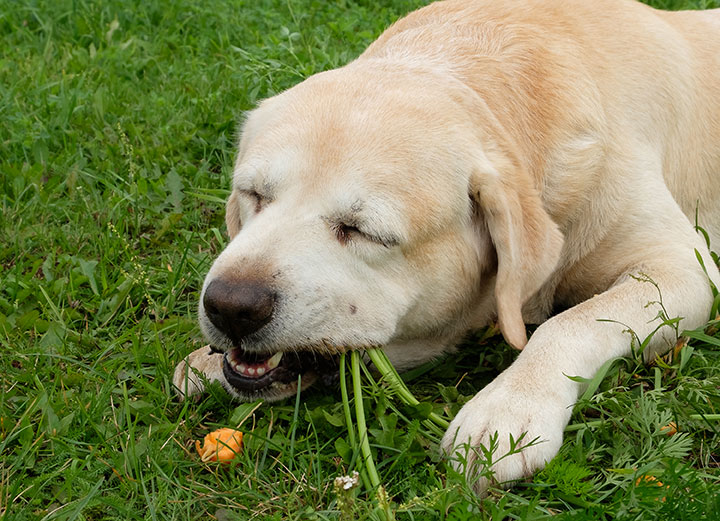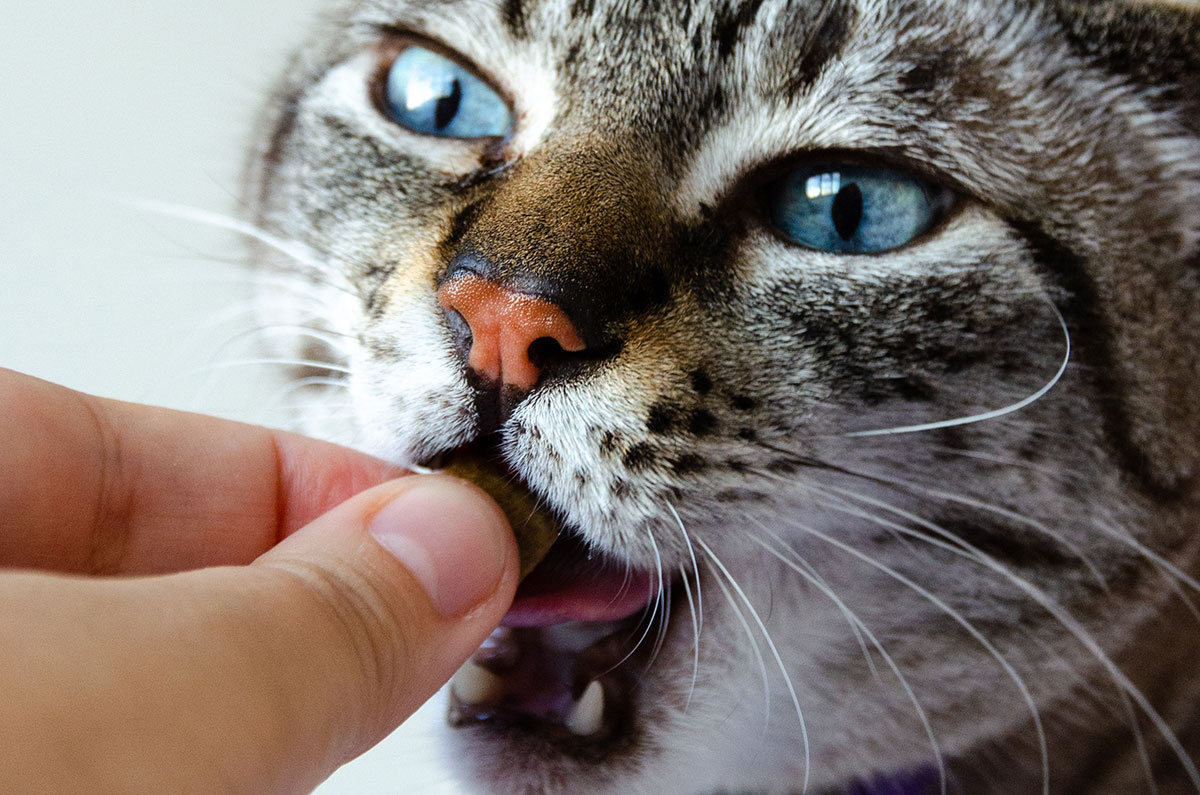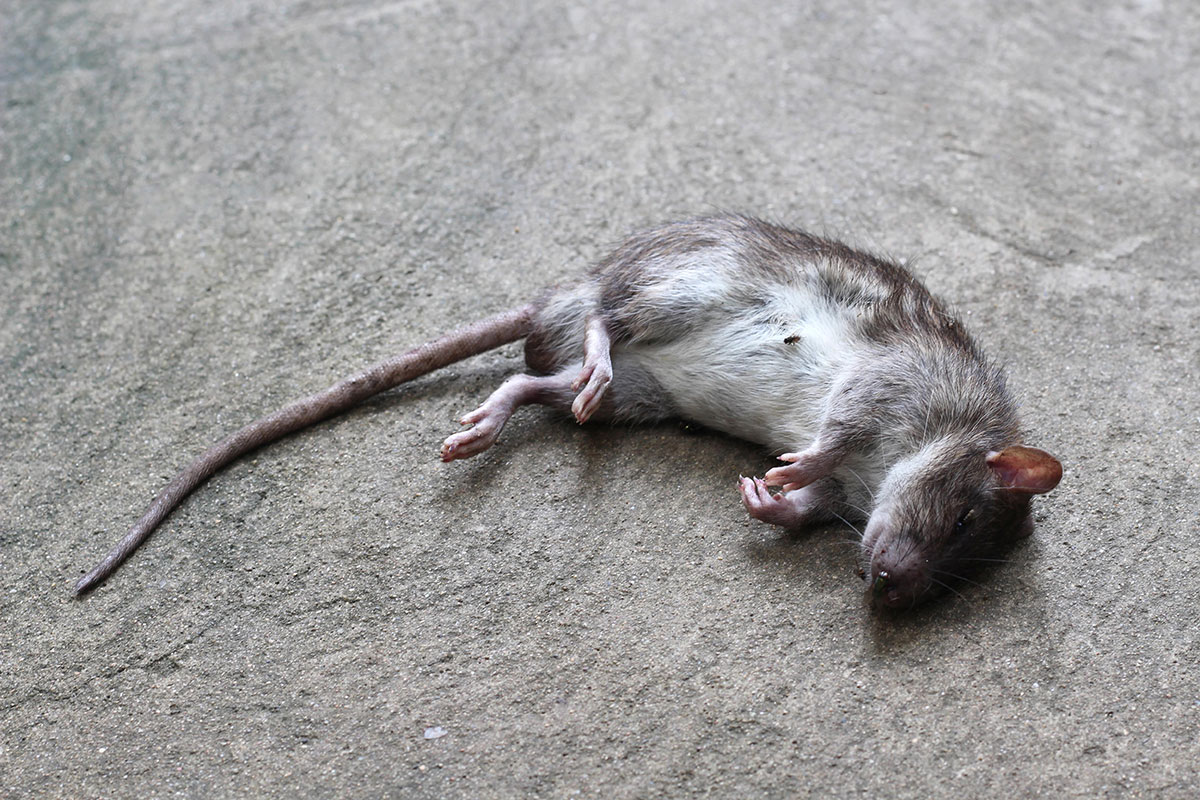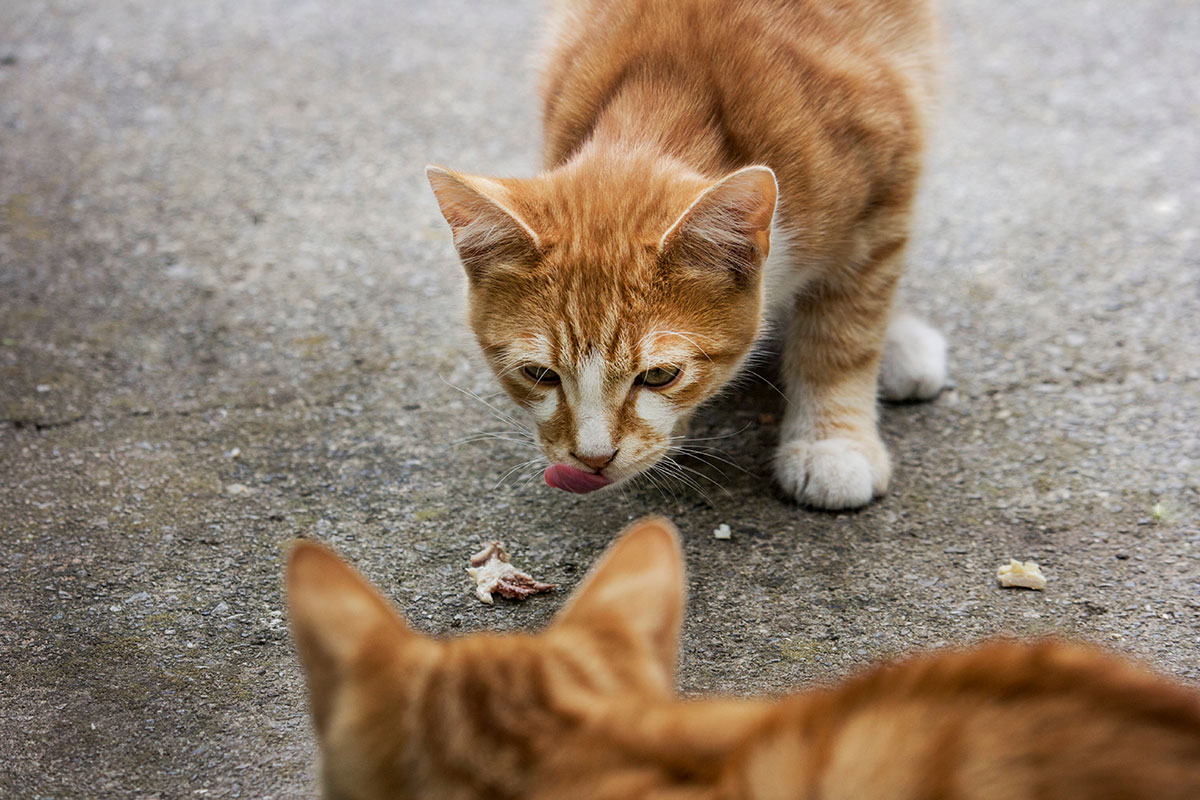Poisonings in dogs and cats are a common occurrence in veterinary practice – whether it is an emergency due to the animal ingesting potentially toxic substances or an unlikely but possible differential diagnosis. These cases pose a challenge for both the pet owner and veterinarian and as such a thorough clinical history is required to ascertain the causes.
Common causes and hidden sources of danger in the household, garden, and during walks
Dogs and cats can be exposed to a variety of household and garden substances that can be potentially dangerous to them. Unfortunately, many pet owners lack of knowledge regarding the potential risks of chemicals, plants, foodstuffs, or anything related to these. In addition, dogs in particular, can be voracious eaters and hastily devour dropped items such as medicine blisters or, out of shear curiosity, bite into objects that could release dangerous substances, e.g. dishwasher tabs, solvent containers, or tubes of glue, etc.
Hazardous substances in the household and garden ‒ cleaning agents, detergents solvents, varnishes, paints, acids and alkalis, pesticides, and all substances marked with a hazardous substance symbol should be stored and secured in a manner that prevents accidental ingestion, or contact.
Puppies and young dogs are at increased risk here due to their curious nature and instinctive play drive. A common example is poisoning caused by antifreeze (ethylene glycol), which is commonly ingested by dogs and cats due to its sweet taste. The clinical signs of antifreeze poisoning are: irritation of the gastrointestinal tract and possible vomiting due to the direct effect of the poison. After absorption, depending on the plasma concentration, neurological symptoms such as ataxia, CNS depression, convulsions, and an intoxicated like state may occur within minutes to a few hours after ingestion. The main toxicity occurs during the degradation of antifreeze by metabolites such as oxalic acid. The kidneys are heavily burdened by the excretion of these metabolites. There is a risk of calcium oxalate crystals forming in the tubules, which can lead to severe kidney damage and even death of the animals. A few milliliters per kg body weight of antifreeze can be enough to cause severe kidney damage, so it is essential to closely monitor kidney function even if small amounts are known to have been ingested. Laboratory values show metabolic acidosis, increased creatinine values, and an increase in other kidney parameters. Calcium oxalate crystals may appear in the urine and haematopoietic and proteinuria may be observed. The animal must be stabilised and allowed to excrete the toxin through the kidney while maintaining renal health. Drinking alcohol competes with antifreeze for degradation by alcohol
dehydrogenase and may thus reduce the formation of toxic metabolites until the parent substance has been excreted. There are case reports describing the successful use of drinking alcohol in practices as an antidote. It is still recommended to induce vomiting shortly after ingestion, the administration of activated charcoal has no effects on antifreeze.
Poisonous plants ‒ Several plant species can be toxic to dogs and cats. Owners need to be aware of the plants that are in their gardens and homes and, if necessary, give them away or secure them so that they are not accessible to animals. Oleander, for example, as an ornamental plant that is often found in the house or garden, does not come from the family of the so-called «dog poisonous plants» by coincidence – unpleasant and irritating for humans, the toxins it contains are even more dangerous for dogs. Poisonous mushrooms in the garden are more of a theoretical danger and are generally avoided by dogs and cats. Whether there is a documented toxicity for pets may be determined by searching for the botanical name, for example, at https://www.vetpharm.uzh.ch/search/index.htm.
- Image source: envatoelements
- Image source: envatoelements
- Image source: envatoelements
- Image source: envatoelements
- Image source: envatoelements
Algae toxins in water bodies ‒ small bodies of water, lakes, and stretches of beach can be contaminated with toxins due to algae blooms, this is a serious source of danger and it is important to take public health warnings very seriously here, not only for humans but also for dogs. Dogs should always be leashed near affected waters and should also not be allowed to run or swim in the water. The danger of spontaneous ingestion is high. In some cases, small amounts of water are enough for poisoning, which may even be fatal.
The greatest danger for poisonings occurring in dogs and cats ‒ humans
Depending on the literature source, and the region studied, the statistics show that the most common causes of poisoning in dogs and cats are in fact caused by substances being administered directly or indirectly by humans.
Veterinary medicinal products ‒ Improper use or overdoses of veterinary medicines result in the increased occurrence of undesirable, and severe poisonings in pets. In most cases, this is due to misuse. However, a special sensitivity for certain substance groups is also possible. For example, the known ivermectin intolerance of some herding dog breeds is caused by the MDR1 defect, for which precautionary testing can be carried out.
Human medicinal products ‒ represent a danger that is often underestimated by animal owners; depending on the literature, they are the reason for up to one-third of all reported cases of poisoning in dogs and cats. In fact, accidental administration or ingestion by the animals is rarely the main cause. Most often, a well-intentioned attempt at therapy by the owners is the cause. People from the human health sector, in particular, are known to administer or use some medicines that are perceived as harmless and commonplace for humans, to their dogs and cats, Common NSAIDs used in human medicine can be highly toxic to dogs or cats. For example, paracetamol, which is often used in humans, is strictly contraindicated in cats. There are literature references that state the lethal dose for cats to be 50 mg/kg body weight – i.e. even parts of common household tablets can have the most severe consequences. Symptoms of poisoning such as severe disturbances of the general condition, severely altered liver values, methaemoglobinaemia and methaemoglobin, oedema, and even cardiovascular disorders can occur, which are caused by severe liver cell damage and the formation and accumulation of methaemoglobin. This is due to the reduced glucuronidation capacity in cats, which leads to the formation of toxic metabolites by alternative degradation pathways. If ingested, it is essential to neutralise the effects as soon as possible. N-acetylcysteine should be administered as an aid to detoxification. Liver and kidney values must be monitored and the affected animals must be stabilised.
Foods and «superfoods» ‒ since dogs and cats, in particular, are carnivores, and are evolutionarily specialised in this area, they do not have similar enzymes or degradation capabilities and are thus more sensitive to some substances than humans. Since our tree-dwelling ancestors consumed not only animal food but also many types of fruits and leaves, humans are relatively well adapted to the ingredients of many, sometimes exotic fruits, berries, etc.
In practical terms, this means that some fruits and ingredients of foods that are considered to be common and healthy for humans or are even called «superfoods» are very dangerous for dogs and cats. Here, for example, very important: Avocados – never feed them to dogs and cats. Birch sugar (xylitol), increasingly popular as a «sugar substitute» or as a sweetener in «sugar-free» products, is very dangerous for dogs. Even small amounts can lead to poisoning. Cocoa (especially dark chocolate) and grapes can also cause sometimes severe symptoms of poisoning in sensitive individuals.
Drugs (drugs of abuse) ‒ are a rare but recurrent source of poisoning. Sources can be passive smoking, accidental ingestion in the household, but also during walks, e.g. in city parks. Symptoms are usually similar to those of human consumption and can even lead to severe poisoning. Quick tests for urine available from human pharmacies can be helpful for rapid identification.
(Poison) baits, pesticides and rodenticides ‒ the saddest topic in the field of poisoning. So-called «pesticides» generally pose a great direct and indirect threat to outdoor cats and dogs.
However, a clear distinction must be made here between «normal» use against pests and the deliberate attempt to poison pets.
The use of rodenticides (poison against rodents) is more or less well-regulated depending on the country. If you let your dog and cat run free near farms, stables, or food processing plants, you should be aware that in some cases the operators are legally obliged to carry out pest control. It is important to find out where bait boxes (which should be professionally protected from access by dogs and cats) are set up so that these places can be specifically avoided.
So-called coumarin derivatives (anticoagulants) are frequently used. Due to increasing regulation of this poison category, however, the use of a very old substance, alpha-chloralose (narcotic effect), has unfortunately become fashionable again. As the active ingredient alpha-chloralose is currently only subject to limited regulation in Europe, compared to the coumarin derivatives, it can easily be bought over the counter as a bait paste in DIY shops, garden centres, or online shops. Rodenticides can cause symptoms of poisoning not only through direct ingestion of the toxins but also through the ingestion of dead rodents.
These two common substance groups are best confirmed indirectly (in the case of coumarin derivatives by checking blood coagulation and improvement by administering vitamin K) or directly (in the case of alpha-chloralose from serum or urine).
Unfortunately, poisoned bait that is specifically targeted at dogs or cats frequently occurs. The police or at least the veterinary office should always be informed. Although it is sometimes possible for bait material to be analysed by private laboratories, the results of a sample taken privately and not analysed by a government agency can easily be challenged in court. We recommend that you first contact the relevant authorities if you have any suspicions.
General measures in the event of poisoning or suspected poisoning
Important sources of information in an emergency:
Poison control centres ‒ the telephone number of the local poison control centre should be known to every practice. Here you can enquire about appropriate emergency countermeasures for specific poisons, as well as for animals!
You can find out more about poisoning and poisons in animals in German-speaking countries at www.clinitox.ch.
Decontamination & stabilisation
If the poison is known – treat as directed; if the poison is unknown, proceed cautiously with symptomatic therapy.
Stabilising the patient’s cardiovascular functions is the top priority. If this is assured or the patient is still alert on arrival at the practice, decontamination measures should be taken immediately to limit the transfer of toxins from the gastrointestinal tract into the organism or to accelerate possible excretion.
Depending on the patient’s condition and the toxin ingested – induce vomiting (CAVE, e.g. not with alkalis!), administer activated charcoal orally, infuse, consider gastrointestinal lavage, administer oils/paraffin oil for fat-soluble substances or soaps and many more.
Here, as usual, «the dose makes the poison». The more that can be removed from the body quickly or is not absorbed in the first place, the better. It is important to support the organs in metabolising or excreting the toxin and the natural detoxification function. Only in a few cases are there «real» antidotes, such as vitamin K for coumarins.
Monitor clinically until the patient has recovered and preserve material for possible cause research
Once the patient has been stabilised and decontaminated, as far as practically possible, it is essential that they initially remain under observation by their owners or as an inpatient in the clinic, depending on their condition. The general state of health, but especially the functions of the liver and kidneys, should be checked repeatedly. For almost all toxins, the liver and/or kidneys are essential for excretion and can be affected by poisioning or their physiological function may need to be supported therapeutically in order to enable the toxins to be excreted quickly.
If the causative poison is unknown or if there is a general suspicion of poisoning of unclear origin and this is to be clarified in a laboratory at a later date, sample material such as vomitus (with suspected bait), serum or urine must be obtained and stored (freezer) as close as possible to the observed symptoms or before the initial treatment or examination. Urine (preferably more than 1 – 2 ml), which was obtained close to the onset of symptoms, is the most important material, especially in the case of unclear events. Most toxins or their degradation products can be detected in this material during or after the onset of symptoms; in blood or serum it is often no longer possible to detect them at this time (if in doubt, freeze serum and urine). If the owners decide to have the material analysed for toxins at a later date, this will already be available. The examination of material from animals that have not shown any clinical symptoms for some time at this point is usually unsuccessful.
Preventing poisoning by educating pet owners is the most important measure to protect dogs and cats!
Dr Simon Franz Müller
Diagnostic options for suspected poisoning:
– Large screening with blood count
– Coagulation
– Detection of alpha-chloralose
– Detection of thallium (rodenticide)
– Poison screening
– Heavy metal screening








